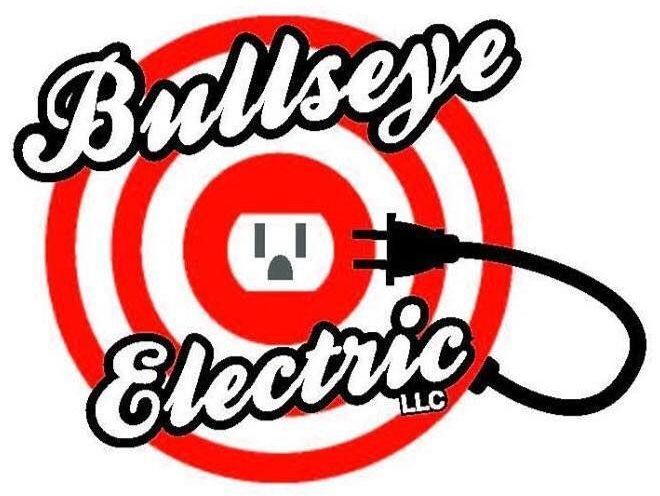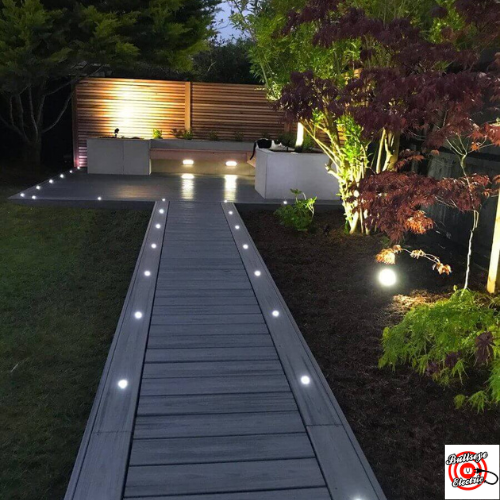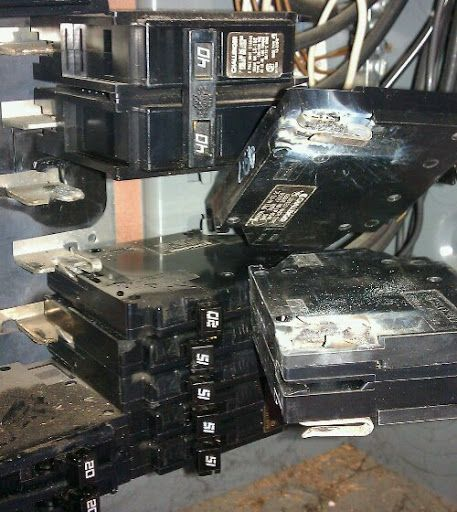Is Your Zinsco Panel Putting Your Home at Risk? What You Need to Know
The Risks and Safety Concerns of Having a Zinsco Panel in Your Home
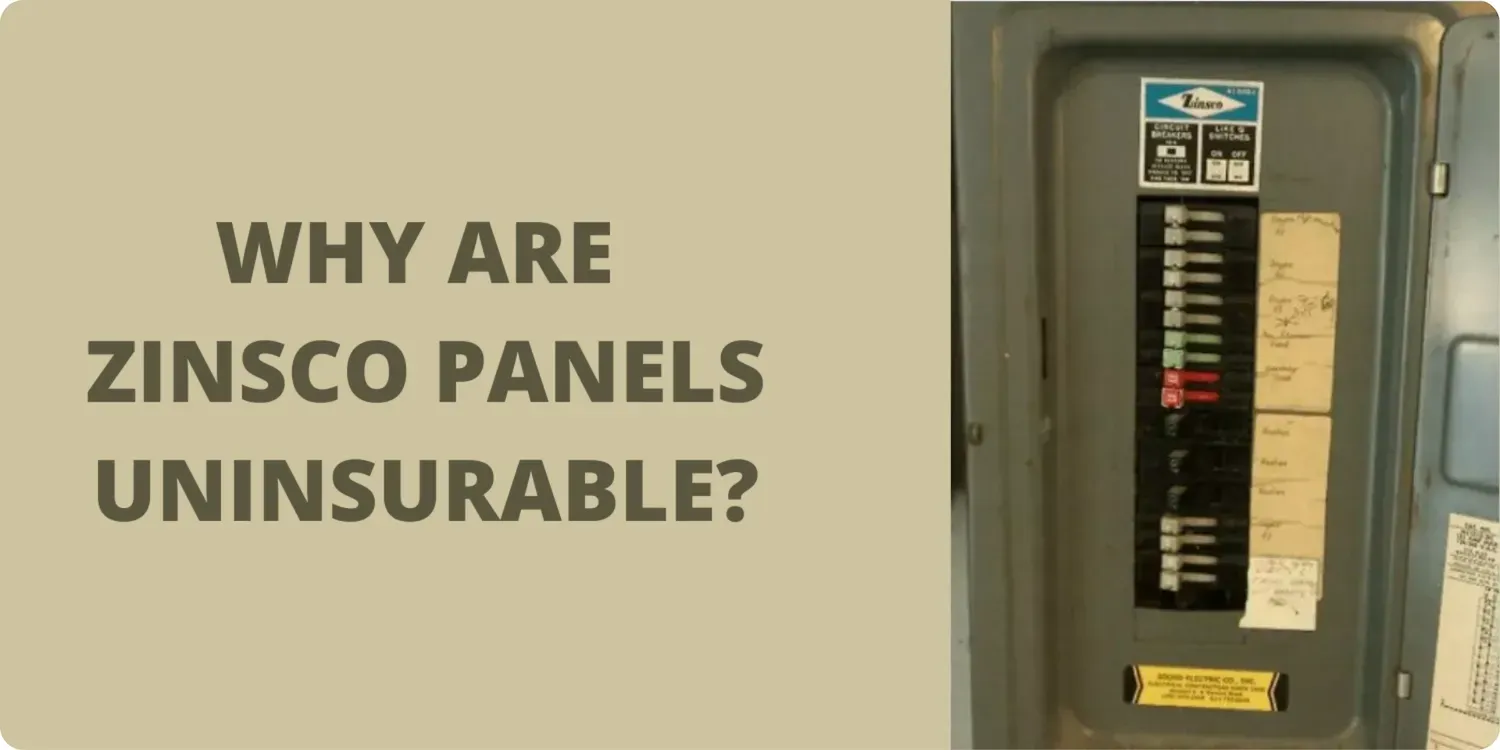
Worried about having a Zinsco panel in your home? Zinsco panels are infamous for serious safety issues, including fire hazards. This article explains the risks associated with Zinsco panels, how to identify one, and what actions to take to ensure your safety.
Key Takeaways
- Zinsco panels have critical design flaws, especially breakers failing to trip during overloads, increasing fire hazards.
- Identifying a Zinsco panel is crucial; look for brand labels and distinctive colored circuit breaker handles.
- Replacing a Zinsco panel with a modern one boosts safety, meets current energy demands, and can improve property value.
- Always have a Licensed Electrician preform all your electrical needs.
Understanding Zinsco Panels
Zinsco panels were commonly installed in buildings throughout the 1970s, especially in the Western United States. Manufactured by the Zinsmeyer Company until production stopped in the mid-1970s, these panels carry brand names like ‘Zinsco,’ ‘Sylvania,’ or ‘GTE-Sylvania.’ They are notorious for significant design flaws and safety concerns.
The main issue lies with Zinsco style circuit breakers. Unlike other branded electrical panels manufactured at the same time, Zinsco panels often have breakers that fail to adequately trip during overloads. This failure can cause overheating and fire hazards. The problem was so serious it was highlighted in a New Jersey court case, underscoring its severity.
The risk is real. As these panels age, breakers may no longer trip properly, increasing the chance of fire and electrical dangers. If you live in an older home, understanding and addressing these risks is vital for your household’s safety.
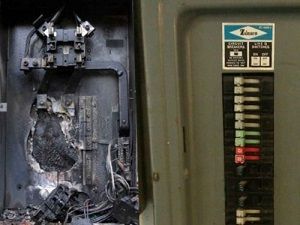
Why Zinsco Panels Are a Fire Hazard
A primary fire hazard stems from the poor connection between circuit breakers and the aluminum bus bar. These connections corrode easily, leading to poor conductivity and overheating. Aluminum components are more prone to corrosion than copper and can fuse under heat.
Many Zinsco breakers fail to trip during overloads, which is essential to prevent overheating. This failure can cause wires to melt and the panel or wiring to catch fire. Manufacturing defects further compromise breaker safety, increasing risks of overheating and short circuits. During a short circuit, an extreme amount of current flows, which may not stop if the breaker doesn’t trip.
Additionally, breakers may appear off but still conduct electricity, creating a hidden fire risk. This inability to manage electrical loads properly greatly increases fire hazards in homes with Zinsco panels.
Upgrading to a modern electrical panel can greatly reduce these risks, making your home safer and easier to manage.
Identifying a Zinsco Panel
Knowing if your home has a Zinsco panel is the first step to safety. Look for labels inside your panel reading ‘Zinsco,’ ‘Sylvania,’ or ‘GTE-Sylvania.’ These clearly indicate a Zinsco panel. Another sign is a vertical row of color-coded circuit breaker handles with bright red, blue, or green tabs. Black breakers may also be present.
The brand logo usually appears at the top of the panel. Spotting these signs helps you take the necessary safety measures.
Common Issues with Zinsco Panels
Zinsco panels suffer from outdated design and materials. Common problems include:
- Deterioration of bus bar plating, causing poor electrical connections.
- Increased resistance leading to overheating.
- Use of aluminum components prone to corrosion.
These issues contribute to safety flaws and design weaknesses. Corroded bus bars cause electrical hazards often hidden during routine inspections. Breakers frequently fail to trip, increasing fire risks.
Breakers melting into bus bars also raise electric shock risks. The faulty design prevents breakers from tripping during overloads, causing overheating and fire hazards. These problems highlight the urgent need to address Zinsco panel risks.
Many electricians avoid working on Zinsco panels due to their dangers and repair challenges.
Steps to Take if You Have a Zinsco Panel
If you discover a Zinsco panel, act immediately. Consult a licensed electrician to assess the panel’s safety. A licensed electrical contractor can inspect and replace the panel if needed to ensure your electrical system’s safety and efficiency. Though outdated, Zinsco panels still exist in some homes, making inspections essential.
If the panel shows damage like rust or dents, replacing the entire panel is safer than repairs. Sometimes retrofit kits allow upgrades without full replacement, but most electricians recommend total replacement due to panel age and degradation. Only licensed electricians should repair or replace Zinsco panels, following local regulations and permits.
Taking these steps protects your home and updates your electrical system to current standards. Prompt action prevents disasters and brings peace of mind about your electrical safety.
Benefits of Replacing a Zinsco Panel
Replacing a Zinsco panel offers many benefits beyond safety. Modern load centers meet current safety standards and handle today’s electrical loads. Upgrading ensures compliance with safety codes, supports modern energy demands, and can increase home value.
Enhanced Safety
New panels meet Underwriters Laboratories (UL) safety certifications, unlike older Zinsco panels. This reduces fire risks and reassures buyers about electrical safety. Upgrading protects your home and meets modern safety expectations.
Meeting Modern Energy Demands
Modern homes require more power for appliances and technology. Older Zinsco panels often can’t meet these demands safely. New panels handle increased loads without overheating or outages, improving reliability and safety.
Increased Home Value
Replacing a Zinsco panel can boost your home’s market value and attract buyers. Outdated electrical systems deter buyers or lower offers. Upgrading addresses concerns, making your home more attractive and easier to sell.
Scheduling a Professional Inspection
A licensed electrician’s inspection is vital to assess Zinsco panel safety. Professional checks can find hidden risks missed by standard inspections. Schedule inspections promptly to avoid serious hazards.
Timely electrician visits prevent safety and financial problems. Inspections reveal fire or shock risks and signs your panel needs repair or replacement, such as unusual smells or sounds. This proactive step is essential for home safety.
Insurance Implications of Zinsco Panels
Homes with Zinsco panels often face higher insurance premiums or refusal of coverage due to fire risks. Insurance providers may refuse renewal after inspections. Zinsco panels limit options for standard policies and increase costs.
If a fire occurs and the hazard was known, claims may be denied. Not disclosing a problematic panel can cause claim denial. Documentation like work orders or receipts may be needed after panel replacement.
Landlords must maintain safe conditions, including replacing unsafe electrical panels.
Summary
Zinsco panels pose serious safety risks due to design flaws, corrosion, and breaker failures. Identifying and addressing these panels is crucial to prevent electrical fires and protect your home.
Replacing a Zinsco panel with a modern one improves safety, supports today’s energy needs, and increases home value. Scheduling a professional inspection is the first step to ensuring your electrical system’s safety.
Don’t ignore this hidden danger. Act now to protect your family, increase your property’s worth, and gain peace of mind by upgrading your electrical system.
Frequently Asked Questions
How can I identify if I have a Zinsco panel?
Check for labels like 'Zinsco,' 'Sylvania,' or 'GTE-Sylvania' and look for color-coded circuit breaker handles. These confirm a Zinsco panel.
Why are Zinsco panels considered a fire hazard?
Due to design flaws, aluminum corrosion, and high breaker failure rates, Zinsco panels significantly increase fire risk.
What should I do if I have a Zinsco panel?
Consult a licensed electrician and inspect for damage. Replacing the panel is recommended for safety.
How does replacing a Zinsco panel benefit my home?
It enhances safety, meets modern electrical demands, and can increase your home's value.
Will having a Zinsco panel affect my home insurance?
Yes, it can lead to higher premiums or denial of coverage. Replacing the panel helps avoid these issues.
Request A Free Quote
Fill out the form below for a call back from one of
our team members or click to call 847-849-0196
Contact Us
Your information is secured
